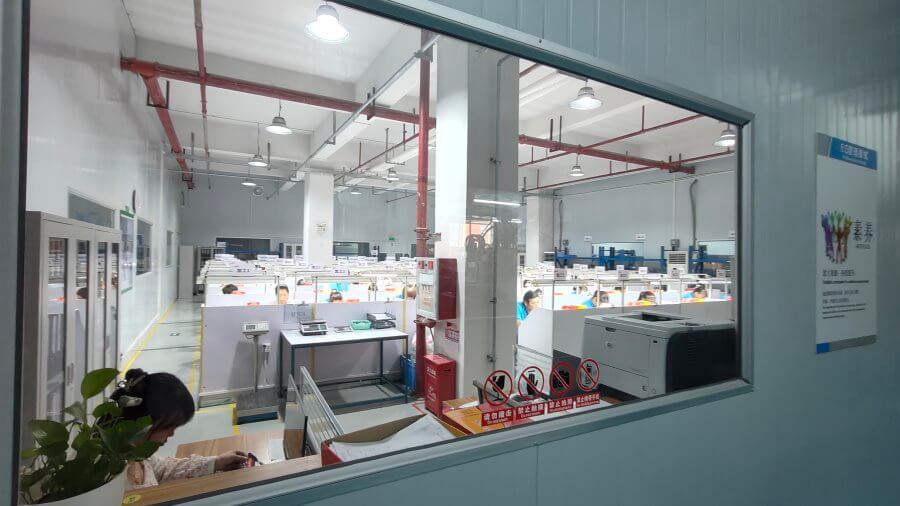Silicone, known for its high-temperature resistance, stable adhesion, and excellent durability, is widely used in various industries. Industries such as automotive electronics, footwear and apparel, cooking and baking tools, and medical equipment commonly use silicone. As the application scope of silicone continues to expand, the demand for higher quality and performance in silicone products has increased across different sectors.
After silicone products are molded, their performance, functionality, and appearance need to be further analyzed and enhanced. This makes silicone surface treatment processes crucial. Common silicone surface treatment methods include sandblasting (matte finish), polishing (glossy finish), etching, screen printing (or silk printing), pad printing, color printing, silicone surface coating, tactile oil coating, PU coating, and laser engraving, among others.
Mold Surface Treatment
1. Sandblasting (Matte Finish)
The matte finish from sandblasting is typically achieved by initially performing mold surface treatment on the silicone product’s mold steel. This process includes handling the surface’s tool marks and burrs, followed by sandblasting to achieve the matte effect. The result gives the product a frosted appearance. This is one of the most common methods used for silicone products. The matte finish can vary in grade, primarily depending on the coarseness or fineness of the sandblasting particles used. Different levels of texture can be achieved by selecting different sandblasting grains to create fine or rough surface effects.
2. Polishing (Glossy, Mirror Finish)
The glossy or mirror finish from polishing is a common surface treatment used across various industries. This process enhances silicone products to achieve a high-gloss, shiny effect and the clear, transparent look of high-purity silicone materials. During the mold surface treatment, the mold is polished to a mirror finish, typically using precision or ultrasonic polishing (different polishing methods for different products). Common products such as silicone mats (table contact surfaces), silicone nipples, and medical silicone tubing are often produced with this glossy mold finish.
3. Etching (Engraved Pattern Surface Effect)
Etching is a popular surface treatment for silicone protective covers. This method typically uses laser, film, and chemical etching techniques to process the mold surface, achieving a detailed engraving effect. The finest etching can reach up to 0.01mm, allowing for a wide range of patterns and designs to be created. The surface becomes finely detailed and realistic, enhancing the appearance of the silicone product. However, this process is more costly, and thus, manufacturers of silicone products rarely choose to use etching for surface treatment. The pattern effects can vary greatly depending on the required texture, smoothness, and other specific product and appearance needs.
Silicone Printing

1. Screen Printing (or Silk Screen Printing)
Screen printing, also known as silk screen printing is a commonly used technique in many industries, often applied for product logos, appearance patterns, and lettering. It primarily uses screen printing to create designs on the mesh surface, employing silicone ink to integrate into the product’s surface appearance. The screen is aligned with the corresponding image and applied to the silicone product, maintaining precise size without deviation. The ink flows through the screen onto the product surface, followed by baking to set the design. This method is most commonly used for silicone decorative items, though it does not provide a three-dimensional effect, and the complex colors produced may not have the best visual outcome.
2. Pad Printing
Pad printing is a process where ink is transferred onto the surface of silicone products to print text, graphics, and images, becoming an important specialty printing technique. For example, the text and graphics on the silicone buttons of mobile phones use this silicone printing method, as well as silicone keyboards for computers and other electronic products. Pad printing is relatively simple, using a steel (or copper, thermoplastic) intaglio plate and a silicone-made curved pad to transfer ink from the plate to the desired surface. The printed silicone buttons feature excellent durability, resistance to deformation, no ink smearing, and good ink transfer performance. Pad printing is used for silicone toys, electronic products, lighting, plastic toys, electroplated items, trademarks, and irregular pattern printing.
3. Colored Printing
Colored printing uses heat transfer printing technology, which is similar to regular printing but can produce hundreds or even thousands of colors. The product surface must be smooth for the transfer to occur. Heat transfer printing, water transfer printing, and pad printing are various methods that cater to different materials and product effects. The advantage of color printing is that it can create any kind of pattern effect, though the process is more complicated, and the cost is higher. Color printing involves printing any color pattern on a pre-processed silicone product. The result is not only visually appealing but also three-dimensional, with a strong tactile sensation. The design is printed on all sides of the silicone product, with the pattern being smooth and natural.
Surface Coating
1. Silicone Color Coating
Silicone surface color coating involves spraying a coloring agent onto the surface of silicone products. There are two main reasons for applying color to silicone products: first, when the depth of the silicone’s color effect does not meet the customer’s requirements and a deeper color is needed; second, when there are surface defects on the silicone product, the color coating is used to cover and remedy these issues. However, in general, color coatings are mostly applied to black and white silicone products, with other colors being less common.
2. Tactile Oil Coating
Silicone tactile oil, also known as silicone matte oil or silicone dull oil, is mainly used for coating silicone products. After silicone products are molded, their surface often feels rough and uncomfortable. Tactile oil is commonly sprayed onto silicone products to improve the surface effect, enhancing the product’s value and appeal. Tactile oil can significantly increase the smoothness of the silicone surface, providing a soft and pleasant touch, and also helps reduce dust adhesion by creating a matte finish. The key features of tactile oil are:
- It increases the smoothness of the silicone product’s surface, making it feel more refined and eliminating the rough sensation after molding.
- It provides wear resistance, improving the durability of silicone products.
- It reduces static electricity, which is common during the silicone molding process, thereby preventing dust from sticking to the surface. Silicone tactile oil is widely applied to silicone products such as mobile phone cases, tablet cases, silicone buttons, and silicone crafts. It has strong adhesion, excellent abrasion resistance, a smooth feel, a shiny surface effect, and a flat coating appearance. It is commonly used in electronic products such as mobile phones, telephones, laptops, fax machines, copiers, remote controls, and other electronic silicone buttons or parts.
3. PU Coating
PU coating uses PU ink, a heat-cured, single-component, high-performance polyurethane ink, known for its excellent protective properties. It is particularly suitable for conductive silicone products, as it helps achieve contact connectivity through its conductive effects. These products are typically used in items like pen tips or reading pens. However, PU ink is rarely used due to the specific requirements of the production environment, as the conductive effect depends heavily on temperature, making the process more complicated.
Silicone Laser Engraving
Laser engraving, also known as laser marking in the industry, is a silicone surface treatment process that creates an appearance effect similar to silicone screen printing. It involves printing text and various symbols or patterns on the surface of silicone buttons. Silicone laser engraving uses optical principles to process the surface of silicone buttons, creating the desired text and symbol patterns. Under sufficient light conditions, the appearance of silicone buttons treated with laser engraving is very similar to those with screen printing. However, when you touch the engraved characters on the laser-engraved button, you will feel a concave texture, while screen-printed buttons have a convex texture.
One of the major selling points of silicone products is their smooth surface and good tactile feel. The use of silicone laser engraving technology does not affect the tactile feel of the product. Even if characters and patterns are engraved, it does not impact the product’s feel, offering the best of both worlds. In contrast, techniques like screen printing may slightly change the touch feel. Additionally, characters printed using other methods tend to wear out over time, whereas characters engraved through silicone laser engraving do not wear out and completely retain the silicone’s tactile feel.





